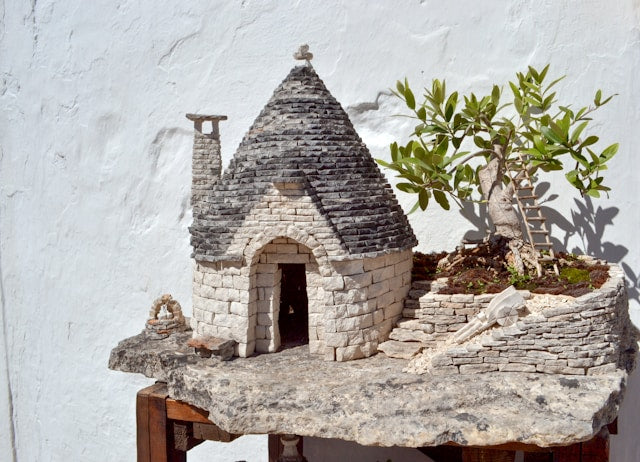
Limestone's Second Act: Bringing Back Its Beauty With Restoration

You might not be aware, but the beauty of many old buildings you admire is often due to limestone, a natural resource known for its durability and aesthetic appeal. However, just like everything else, it's not immune to the ravages of time and elements.
The restoration of limestone, though, can bring back its original glory, and there's a fascinating science behind how this is achieved. Keep reading to uncover some pretty intriguing aspects behind the resurrection of this wonderful material.
The History of Limestone Use
Did you know that limestone, one of the world's oldest and most versatile building materials, has been in use for thousands of years?
This prized stone traces its roots back to ancient civilizations. The Egyptians used it to build their grand pyramids, while the Romans incorporated it into their majestic coliseums.
Despite being so old-fashioned, limestone's appeal hasn't diminished. It's still a go-to choice for architects and builders due to its durability and ease of working. It can be cut into any shape, making it ideal for intricate designs. Plus, it's readily available, which makes it more affordable compared to other materials.
However, limestone isn't just for buildings. It's also used in other industries like agriculture and medicine. Farmers add it to soils to neutralize acidity, while doctors use it to treat certain illnesses.

Understanding Limestone Deterioration
While limestone's versatility and durability make it a favored material, it's not immune to wear and tear. Over time, this naturally occurring rock can lose its aesthetic charm and structural integrity. It's due to a variety of factors that contribute to its decay.
Here are four key causes of limestone deterioration:
- Weathering: The natural elements can cause limestone to erode. Rain, wind, temperature fluctuations, and freeze-thaw cycles gradually wear away the stone's surface.
- Pollution: Airborne pollutants, like sulfur dioxide and nitrogen oxide, can react with limestone, leading to discoloration and structural damage.
- Biological growth: Things like algae, lichens, moss, and fungi can grow on limestone, causing discoloration and, in some cases, physical deterioration.
- Human activity: We can inadvertently damage limestone through improper cleaning methods, the use of inappropriate materials, or physical abrasion.
With this knowledge, you're better equipped to prevent, identify, and address the signs of limestone deterioration.
The Importance of Limestone Restoration
Restoring your limestone's original charm not only enhances its aesthetic appeal but also adds to its longevity, making it a worthwhile investment.
Restoration helps maintain the structural integrity of your limestone. It can reverse years of wear, addressing cracks, chips, and other imperfections that, if left untreated, can lead to more serious damage.
In addition, limestone restoration can significantly increase the value of your property. Picture a beautifully restored limestone facade on your home or business. Not only does it make your property more appealing, but it can also attract potential buyers or clients.

Basic Steps in Limestone Restoration
Here's a simple 4-step rundown that'll guide you through:
- Cleaning: Start by removing dirt and grime from the limestone surface. Mild, pH-neutral cleaners work best. Steer clear of acid-based ones as they'll cause more harm than good.
- Inspection: Once cleaned, scrutinize the limestone for any signs of damage. Cracks, chips, and erosion need to be noted down. You'd want to fix these in the next stages.
- Preparation: This involves getting your restoration materials ready. From matching limestone to the original color and texture to gathering the right tools, this stage requires meticulous attention.
- Restoration: Now comes the actual restoration. Repair the noted damages with matching limestone and seal the surface to protect it from future harm.
Techniques in Repairing Damaged Limestone
How exactly do you go about repairing damaged limestone?
The first step is to identify the extent of the damage. Small cracks and chips can be fixed using a limestone repair epoxy. This adhesive fills in the cracks, and when it dries, it blends in with the rest of the stone.
For larger damages, you may need to replace the damaged piece entirely. To do this, carefully remove the damaged piece and clean the area. Once it's clean, apply a suitable adhesive, place the new piece of limestone, and ensure it's leveled with the rest of the surface.
Another technique you can use is limestone patching. This involves applying a limestone patching compound to the damaged area, smoothing it out, and allowing it to dry before sanding it down to match the rest of the surface.
If your limestone has lost its shine, you can bring it back through polishing. This process involves using a series of abrasive pads, each one finer than the last, to slowly bring back the stone's natural shine.
Challenges in Limestone Restoration
Here are four notable challenges that you might face while restoring your limestone:
Damage Assessment
Identifying and assessing the extent of damage accurately can be tricky. It requires a good understanding of limestone's properties and knowledge of how it reacts to various environmental conditions.
Choosing the Right Technique
There's no one-size-fits-all solution. The choice of restoration technique depends on the type of damage and can significantly impact the restoration effectiveness.
Skill Requirement
Limestone restoration is a skilled job. Inadequate skills can lead to further damage instead of restoration. It's important to either acquire the necessary skills or hire a professional.
Cost
Restoration can be expensive. The cost of materials, labor, and potential professional consultation can add up quickly. Budgeting properly is crucial to ensure the process doesn't become a financial burden. There is also the option of replacing it with sintered stones that can be thin enough to overlay onto the existing surface to help save on some cost.
Wrapping Up
Limestone is an impressive material that's been around for ages. It's tough and beautiful, but time and elements can take a toll on it. Fixing worn-out limestone can be challenging and might cost a bit, but it's essential for preserving its good looks and sturdiness.
With the right skills and techniques, it's possible to restore the grandeur of the limestone structure, making it last longer and look even more appealing.
Leave a comment
Comments will be approved before showing up.



